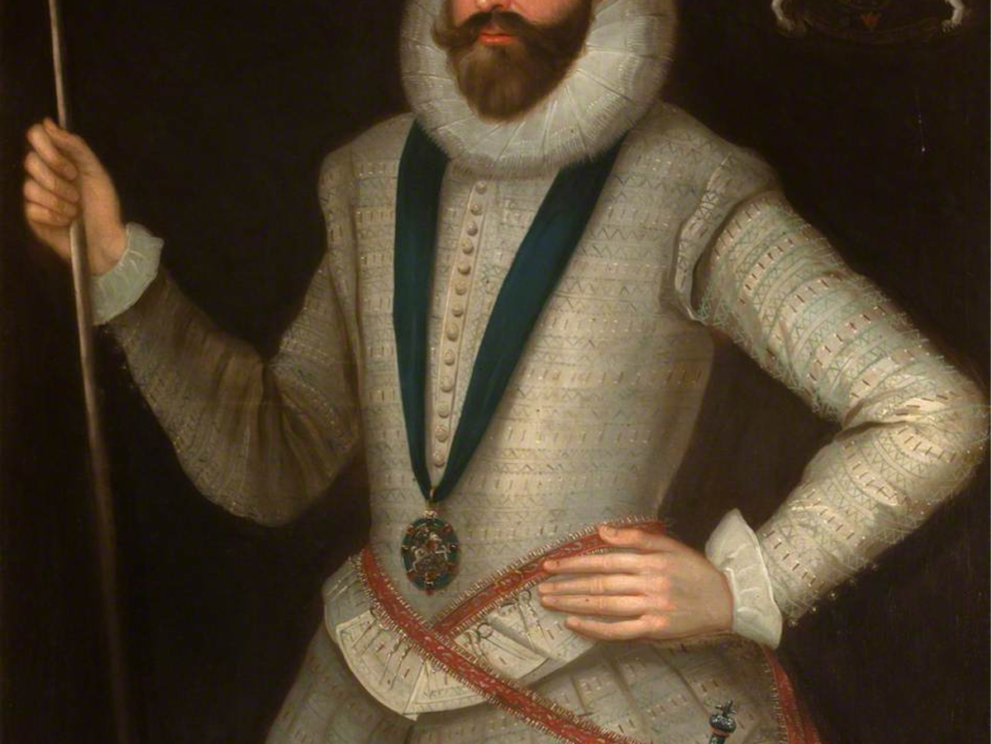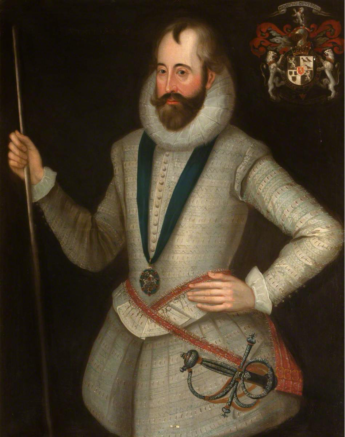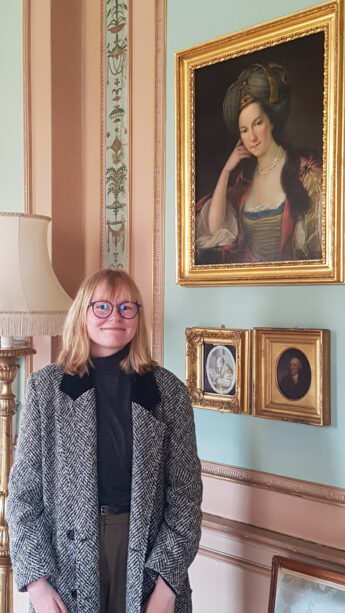Dressing for Success: George, Earl of Dunbar

Aurore Damoiseaux, a postgraduate student at the University of Glasgow in MLitt History of Art: Dress and Textile Histories discusses Paxton House’s portrait of George Home, 1st Earl of Dunbar.
GEORGE HOME, 1ST EARL OF DUNBAR: DRESSING FOR SUCCESS
The painting on the main staircase of Paxton House depicts George Home, the first Earl of Dunbar, in 1610. George Home became a very prominent man, acting almost as leader of Scotland during the reign of James VI and I who had moved with his court to London following the Union of the Crowns in 1603. Made Keeper of the Royal Wardrobe in 1590 on a trip to Norway and Denmark, when his predecessor William Keith of Delny made the unforgivable error of outshining the King with his dressing attire. Keith was replaced by Home there and then. George Home subsequently became the King’s Chief Scottish Advisor, controlling the State Affairs of Scotland, and was made Baron Home of Berwick in 1604.
 George Home, 1st Earl of Dunbar
George Home, 1st Earl of Dunbar
The painting is imbued with George’s important status at court. The first sign is George’s coat of arms proudly displayed above his left shoulder, incorporating the royal lion rampant, emblem of Scottish monarchy. The medal George wears around his neck shows he is a Knight of the Garter while the baton he is seen holding could signify his status as Keeper of the Royal Wardrobe or his recently acquired earldom.
Of course, another signifier of George’s wealth and importance at court is blatantly shown in the garment he is wearing. Just the amount of detail shows that the painter was expensive to commission but the price of the painting itself was more than eclipsed by the price of the garment. The lavishly decorated cloth of silver with which most of the garment is made would have also been very expensive and a clear symbol of status to contemporary viewers. Moreover, during the Renaissance, painters usually gave importance to realism and detailing to the clothing rather than the face of the sitter, showcasing just how important garments were as representation of the person, their place of birth, social status and character.
In this painting, George Home is seen wearing court dress of the early Stuart period, consisting of the ruff around the neck, the doublet with what seems to be white lace at the cuffs, probably from the shirt worn underneath, and breeches which were wide, short trousers reaching the knee. Underneath the breeches, hose would usually be worn to cover the legs. The garment George Home is wearing is reminiscent of late Tudor period dress, worn at the court of Elizabeth I. This style was coherent with the style of James’s court while in Scotland and helped him and his court to appear as a logical continuity to the reign of Elizabeth in London.
Taken from the research report by Aurore Damoiseaux, September 2021
 Aurore Damoiseaux is a postgraduate student at the University of Glasgow in MLitt History of Art: Dress and Textile Histories. She holds a Masters of Arts in History of Art from the University of Aberdeen. Aurore is particularly interested in using garments as a way to find out about the everyday life of people in the eighteenth and nineteenth centuries, as well as the use of clothing as public representation of the personal identity of the wearer.
Aurore Damoiseaux is a postgraduate student at the University of Glasgow in MLitt History of Art: Dress and Textile Histories. She holds a Masters of Arts in History of Art from the University of Aberdeen. Aurore is particularly interested in using garments as a way to find out about the everyday life of people in the eighteenth and nineteenth centuries, as well as the use of clothing as public representation of the personal identity of the wearer.